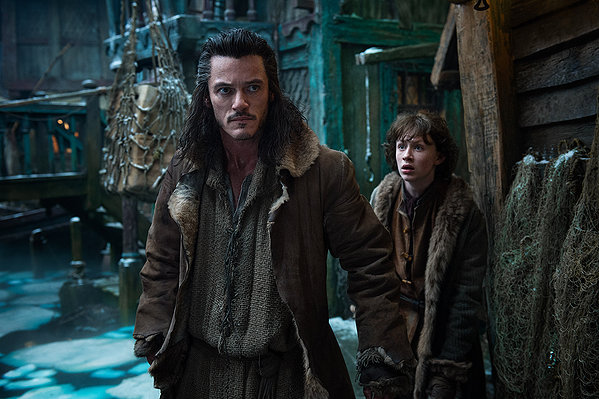REVIEW: 'The Hobbit: The Desolation of Smaug'
I sometimes wonder how the Hobbit movies would have looked if Guillermo del Toro had stayed on as director. Rabid film fans like myself will recall how Del Toro was attached to direct the films, before financial problems at MGM forced Del Toro to move on to other projects. Without a doubt, if Del Toro had stayed, the Hobbit films would have sampled some of the director’s signature style: a blend of his spooky imagination and loving attention to detail.
Sadly, we’ll never see what Del Toro’s Hobbit would have looked like. Instead, we’re left in the capable hands of Peter Jackson, a director who’s more than comfortable bringing Middle Earth to the big screen. The question is whether Jackson is becoming too comfortable for his own good.
The second installment of the series, The Desolation of Smaug, is hitting theatres this weekend. For fans, the film is just as enjoyable as Jackson’s earlier Tolkien-based films. At the same time, Jackson seems overly keen to graft bits and pieces from his Lord of the Rings films onto The Hobbit - a choice that gets increasingly noticeable and worrisome as the films continue.
The references to Rings started last year in the first Hobbit film, An Unexpected Journey. Characters like Galadriel, Saruman and Frodo popped up in brand new scenes (not inspired by the novel), apparently to help link up the film to Rings. In the context of the larger movie, these little additions weren’t that distracting. They were largely overshadowed by a more pressing problem: the pacing. Our heroes took far too long to begin their adventure, and even once the story was under way, the energy of the film waxed and waned.
In The Desolation of Smaug, while the pacing has improved, Jackson now seems to have become obsessed with cramming in references to the Rings movies. Whether he’s borrowing objects, scenes, or even whole lines of dialogue, it sometimes feels like Jackson is hammering us over the head with the fact that these movies are prequels to the Rings saga.
The two most obvious examples of this are the reappearance of the athelas plant (once again being used to treat a wound from a poisoned weapon) and Gandalf’s apparent imprisonment in a dark fortress. Both scenes are taken almost directly from The Fellowship of the Ring. While I can certainly stand behind efforts to connect up both trilogies, it feels more like Jackson’s strategy is to give us a sharp dig to the ribs, rather than subtly point us in the right direction.
The good news is that this second installment reveals that the Hobbit trilogy is actually trying to be about something. In other words, there’s more to the movies than a colourful adventure with hobbits, dwarves and dragons. Together, the films warn against lusting for material wealth, by showing the unreasonable lengths people will go to possess it, as well as the madness that it can inflict - even in good people.
Whereas The Lord of the Rings dealt more with the search for absolute power, we see how in The Hobbit, Jackson singles out the pursuit of gold and jewels as the real villain. Take a look at the dwarves' quest: they want to reclaim their homeland, a mountain stuffed with riches, from a dragon who isn't even using the treasure - he simply lounges in it day and night. Meanwhile, factions of Elves, Lake-men and Orcs are preparing for a huge battle over access to the money, once the dragon’s been cleared out. It may not involve the high stakes from the earlier trilogy, but at least there's some sort of cautionary message coming through.
It’s good to see Jackson and his filmmaking team doing justice to the original themes from Tolkien’s story, as they do take some liberties here and there. Most notably, the filmmakers felt the need to transform several key scenes from Tolkien’s original plot into fight scenes. To be fair, most of the fights are beautifully choreographed – expect to have lots of fun during the white-water barrel ride scene – but their addition to the movie still feels a bit mechanical. It’s just another example of Jackson’s over-reliance on the structure he established in Rings.
Despite my qualms over the frequent recycling of Rings material, the overall production value in The Desolation of Smaug still counts for a lot. Even if the screenplay gets on your nerves, it’s hard not to get swept up in the film. This is still Middle Earth, after all. At a certain point, the artifice of a film like this melts away and lets pure escapism take over – which is really what we’re after, isn’t it? The Hobbit: The Desolation of Smaug gets three stars out of four.
What did you think of The Desolation of Smaug? Did you feel Jackson improved on the first film, or are there things you wish were done differently? Did the references to The Lord of the Rings bother you? Join the discussion in the comments section below, and if you liked this review, share it with your friends and followers!



